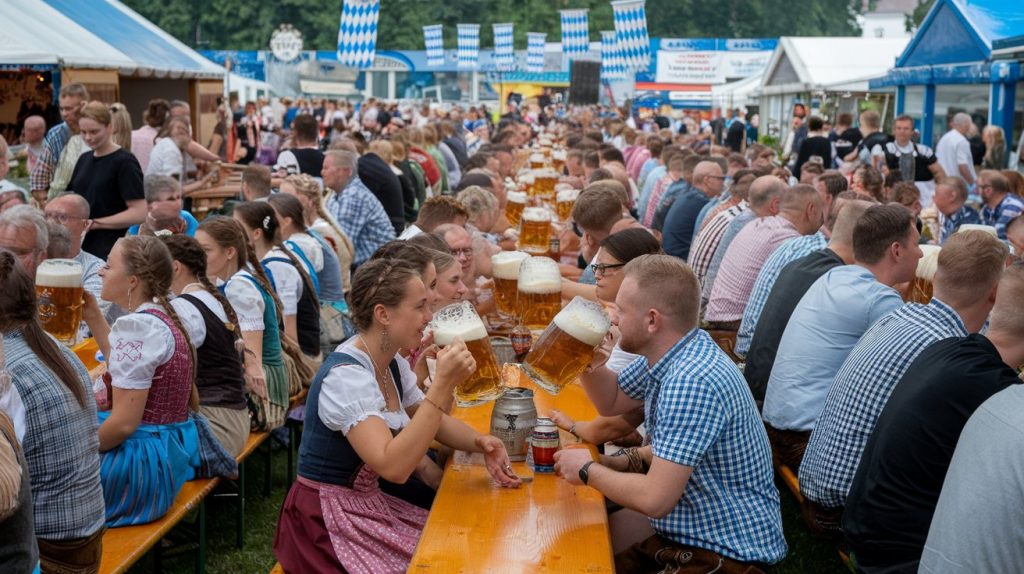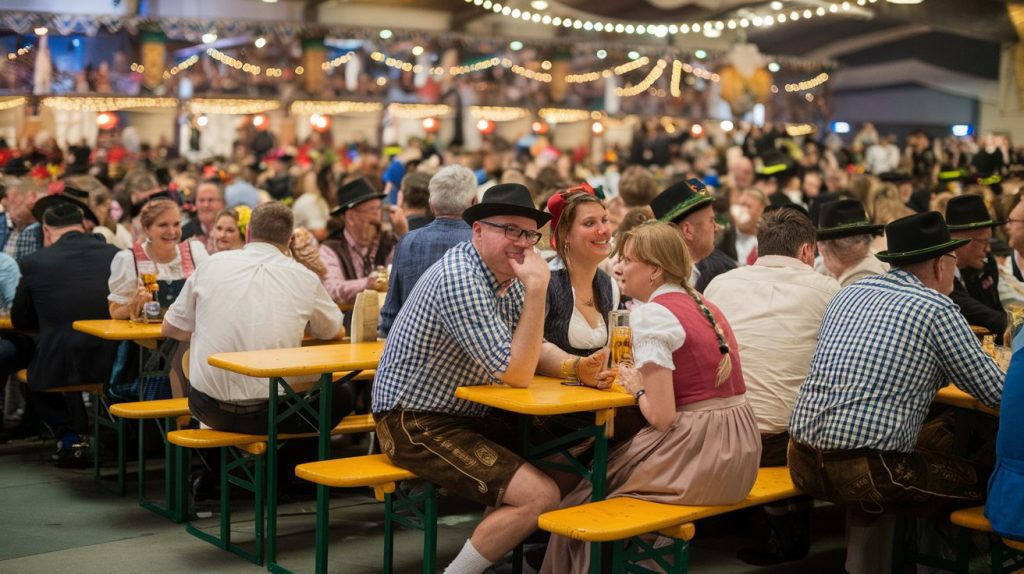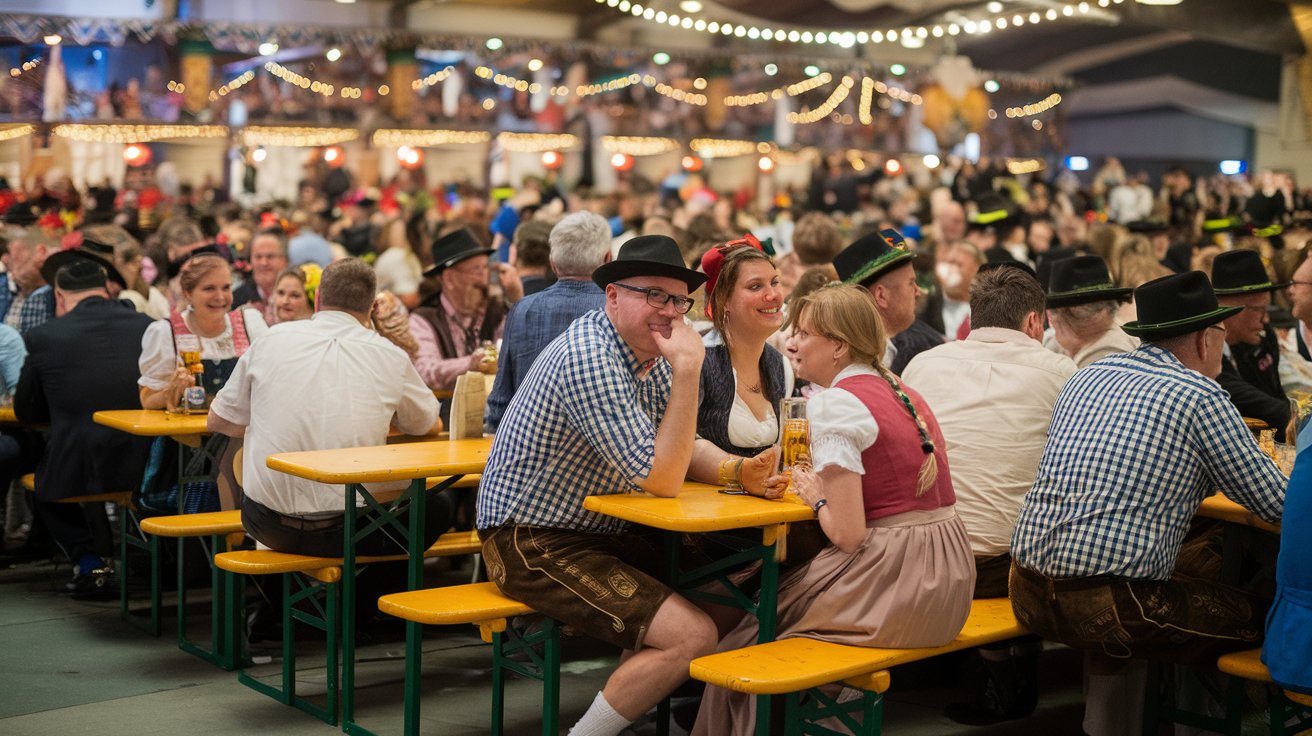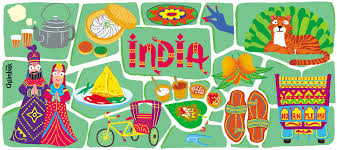The article gives a detailed understanding of The Myths Behind Oktoberfest and the Mid-Autumn Festival.
Festivals are a vibrant tapestry of culture, history, and tradition, each with unique stories and myths. Among the most celebrated are Oktoberfest in Germany and the Mid-Autumn Festival in China. There are fascinating tales handed down through generations that accompany these celebrations. Let us delve into the enchanting myths and legends behind these famous festivals.
Oktoberfest: A Bavarian Extravaganza
Oktoberfest, hosted each year in Munich, Germany, is the largest beer festival globally, drawing millions of visitors across the globe. This 16- to 18-day festival, which begins in late September and ends in the first weekend of October, showcases Bavarian culture with traditional music, food, and, naturally, beer.

The Origins of Oktoberfest
The roots of Oktoberfest date back to October 12, 1810, when Crown Ruler Ludwig (later Lord Ludwig I) hitched Princess Therese of Sachsen-Hildburghausen. The citizens of Munich received invitations to join in the festivities, which took over five days on the fields in front of the city gates. These fields were later named Theresienwiese (Therese’s Meadow) in honor of the princess, and the annual celebration became known as Oktoberfest.
The festival begins with a ceremony in which the pioneer of Munich taps the first barrel of beer, marking the official start of the celebrations. Visitors can enjoy traditional Bavarian music played by brass bands, indulge in regional delicacies like pretzels, sausages, and roast chicken, and participate in various games and rides.
Myths and Legends of Oktoberfest
While Oktoberfest is primarily known for its beer and merrymaking, it also has its share of myths and legends:
- The Beer Purity Law: One of the most preserving myths is associated with the Reinheitsgebot, or the Beer Purity Law in 1516. This law stipulated that beer had to be brewed exclusively from barley, hops, and water. Yeast was later incorporated into the process by law. While the law is genuine, the myth is to ensure the quality of beer served at Oktoberfest. In reality, the law aimed to prevent price competition with bakers for wheat and rye.
- The Legend of the Beer Maidens: Another popular legend involves the beer maidens, or Biermädchen, who are said to possess magical powers that ensure the beer never runs out. According to the myth, these maidens received blessings from the deities to keep the festival lively and joyful. Although this story is delightful, the truth is that breweries meticulously plan and manage the beer supply.
- The Ghost of Theresienwiese: Some locals believe that the spirit of Princess Therese still roams the festival grounds, ensuring that her namesake celebration remains joyous and trouble-free. This ghostly presence is said to bring good luck to those who encounter her.

Mid-Autumn Festival: A Lunar Celebration
The Mid-Autumn Festival, often celebrated under a full moon, is ranked as one of China’s most cherished and time-honored traditions. Celebrated on the 15th day of the eighth lunar month, it is a time for family reunions, mooncakes, and moon gazing.
The Origins of the Mid-Autumn Festival
The Mid-Autumn Festival has its roots in ancient Chinese agricultural practices. It was originally a harvest festival, where people gave thanks for the bounty of nature and prayed for good fortune. Over time, it transformed into a celebration of the moon, which shines its brightest and fullest on this night.

Myths and Legends of the Mid-Autumn Festival
The Mid-Autumn Festival is rich with myths and legends, many of which revolve around the moon:
- The Legend of Chang’e and Hou Yi: The most famous story associated with the Mid-Autumn Festival is that of Chang’e, the Moon Goddess, and her husband, Hou Yi. There were once ten suns in the sky, burning the soil and making life unbearable. The legendary archer, Hou Yi, saved humanity by shooting down nine of the suns. As compensation, he got a remedy of eternality. However, he chose to stay with his beloved wife, Chang’e. One day, a villain named Peng Meng tried to steal the elixir, and in desperation, Chang’e drank it herself. She ascended to the moon, where she currently resides, separated from her husband.
- The Jade Rabbit: Another popular myth involves the Jade Rabbit, who is said to live on the moon with Chang’e. The story goes that three immortals, disguised as elderly men, asked a fox, a monkey, and a rabbit for food. The fox and monkey provided food, but the rabbit, having nothing to offer, sacrificed itself by jumping into the fire. The immortals, moved by the selfless act of the rabbit, sent it to the moon, where people later named it the Jade Rabbit.
- Wu Gang Chopping the Tree: This lesser-known legend tells of Wu Gang, a woodcutter banished to the moon as punishment for his mistakes. His task was to chop down a self-healing laurel tree, a never-ending job embodying eternal struggle. If one looks closely at the moon, one might spot the shadow of Wu Gang and his tree.
Read Case Studies
Celebrating the Festivals Today
Despite their transformations over the centuries, Oktoberfest and the Mid-Autumn Festival continue to uphold their rich cultural traditions.

Oktoberfest Today
Modern Oktoberfest is a grand spectacle featuring massive beer tents, amusement rides, parades, and traditional Bavarian attire. Visitors from around the world come to experience the lively atmosphere, enjoy hearty German cuisine, and, of course, drink beer. The festival has also inspired similar celebrations in other countries, spreading Bavarian culture far and wide.
Mid-Autumn Festival Today
The Mid-Autumn Festival involves family gatherings, mooncakes, and lanterns. People unite to admire the full moon, share stories, and enjoy traditional foods. Mooncakes, featuring rich fillings and detailed designs, play a central role in the celebration. Lanterns, often in the shape of animals or mythical creatures, are lit and released into the sky, symbolizing the sending of wishes and prayers.
A Universal Celebration of Life and Togetherness
Oktoberfest and the Mid-Autumn Festival are more than just celebrations; they are a testament to the rich cultural heritage and enduring traditions of their own cultures. The myths and stories associated with these festivals add a layer of magic and wonder, connecting us to the past and reminding us of the timeless human desire to celebrate life, love, and community.
Whether raising a stein of beer in Munich or gazing at the moon in China, these festivals offer a unique glimpse into the heart and soul of their cultures. So, next time you find yourself at Oktoberfest or the Mid-Autumn Festival, take a moment to appreciate the stories and legends that make these celebrations truly special.


